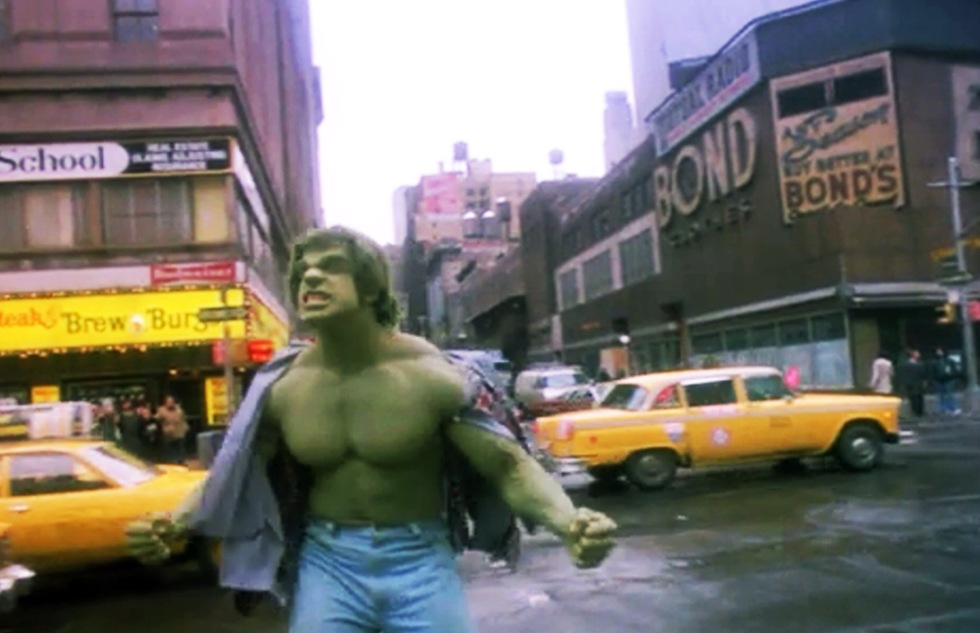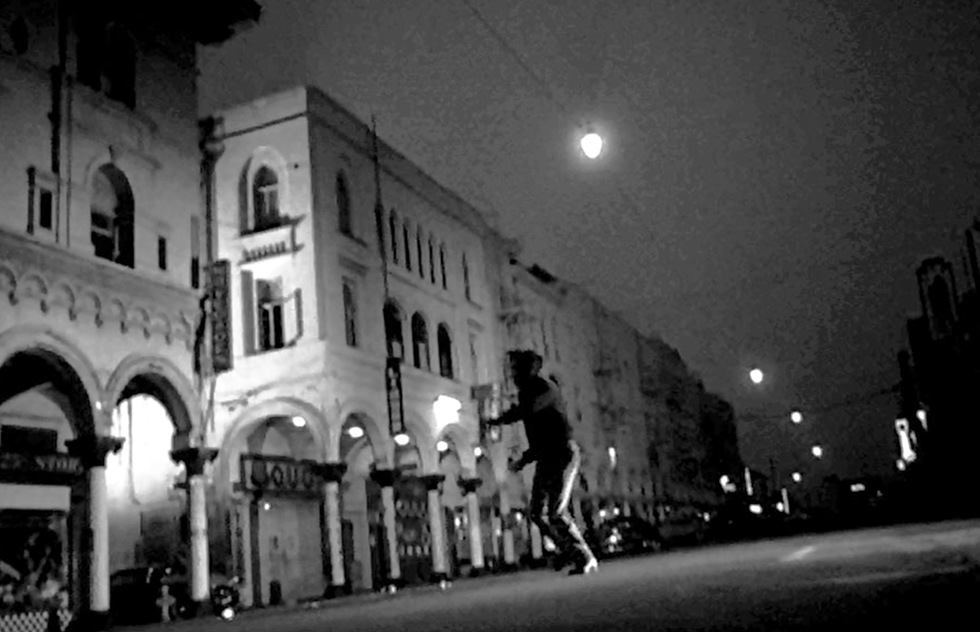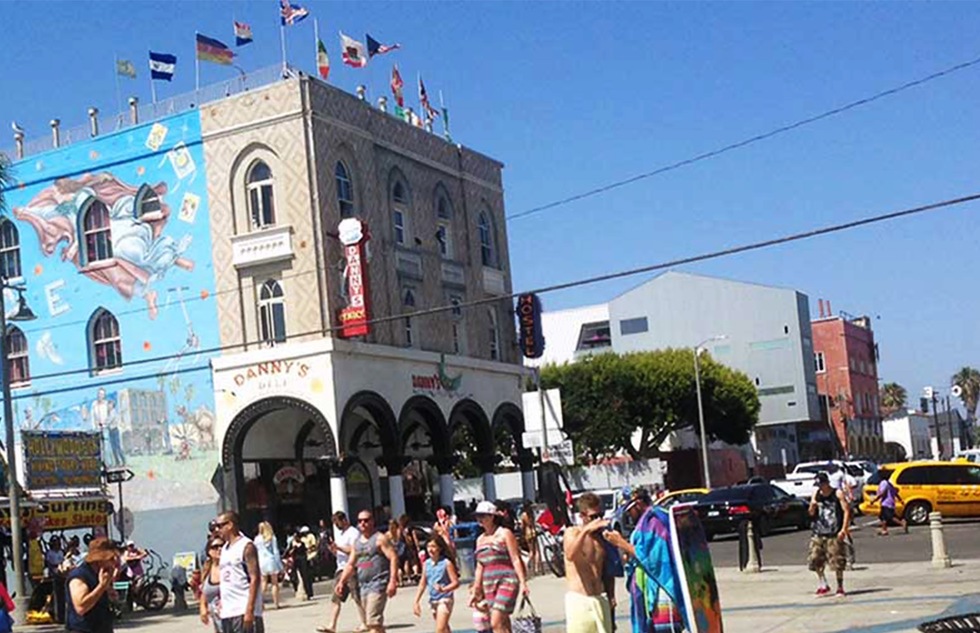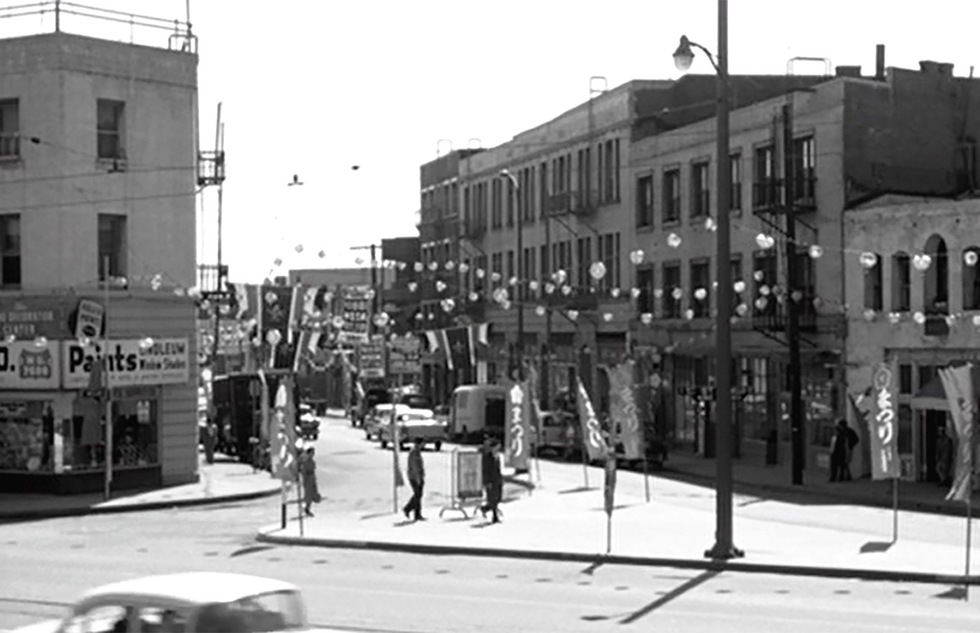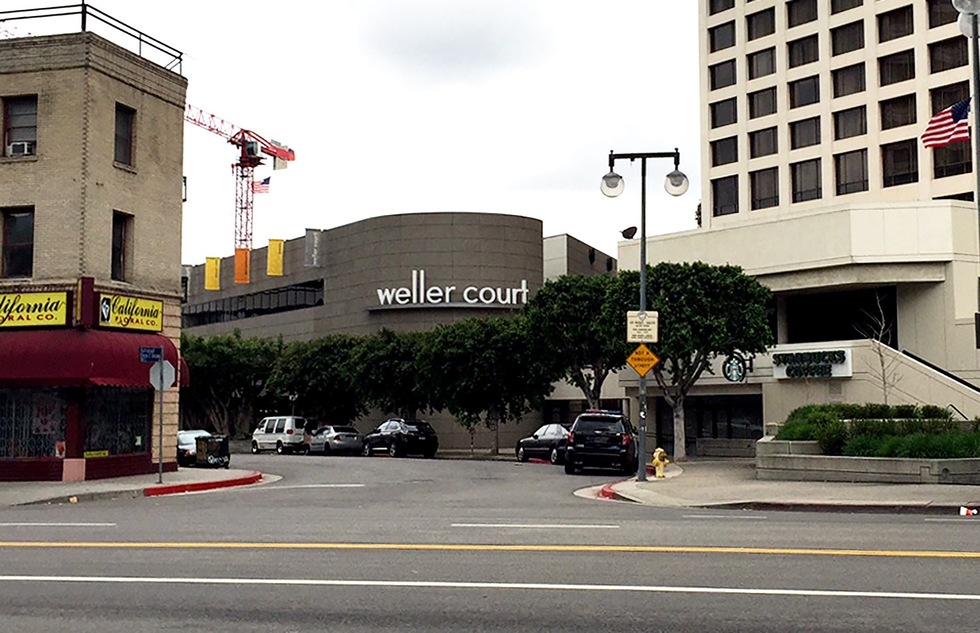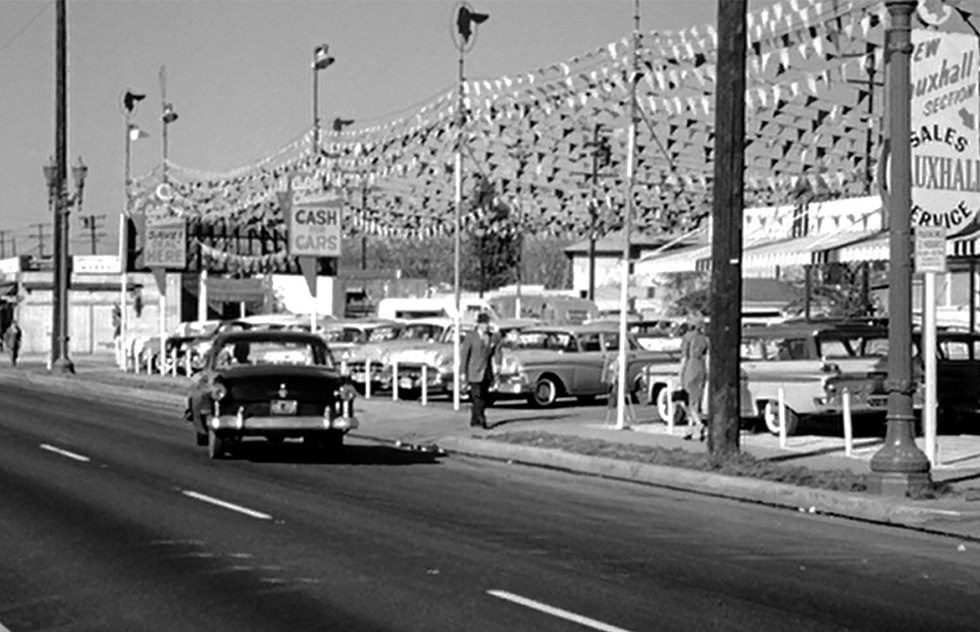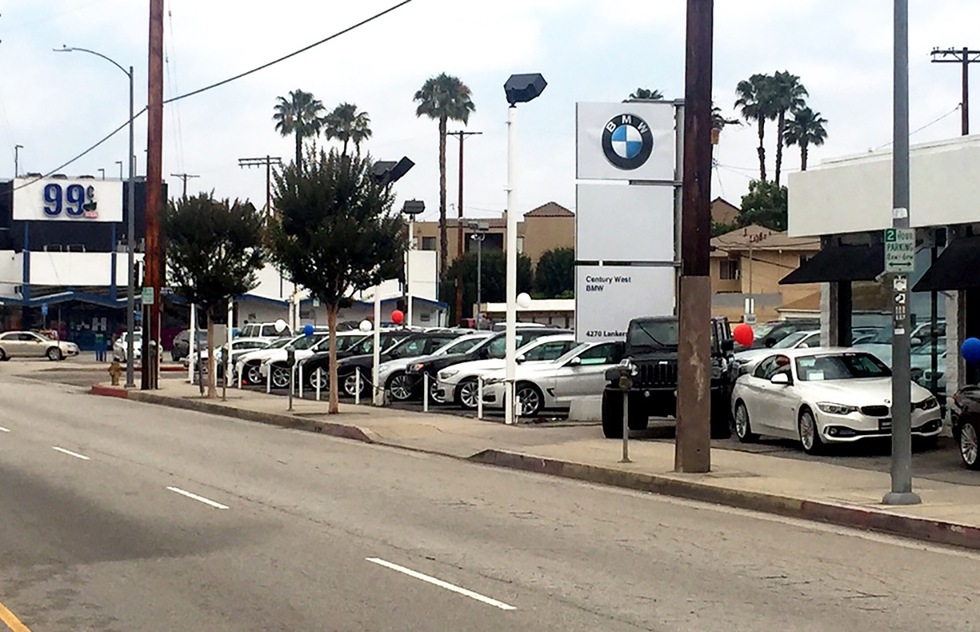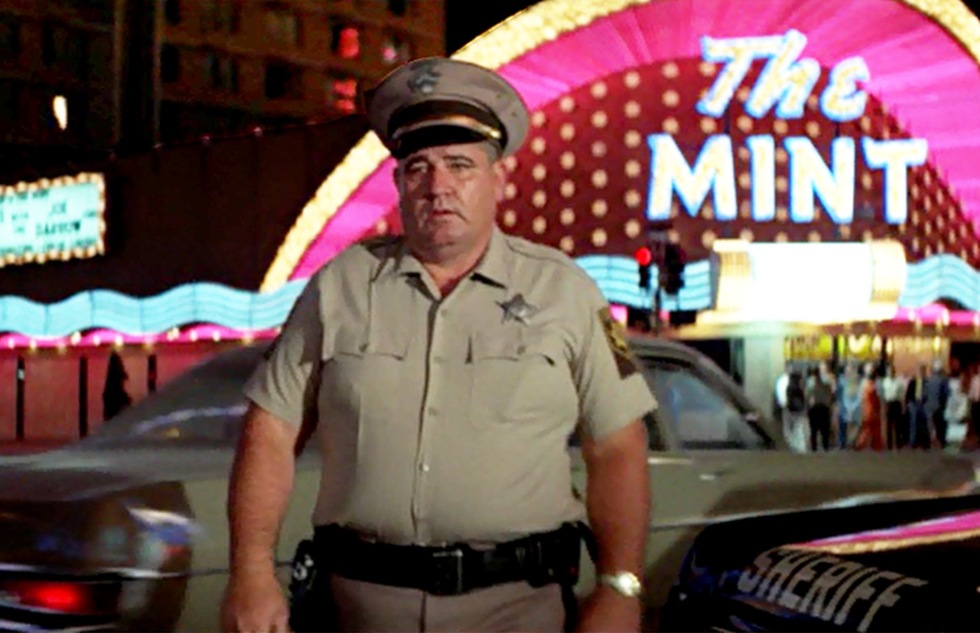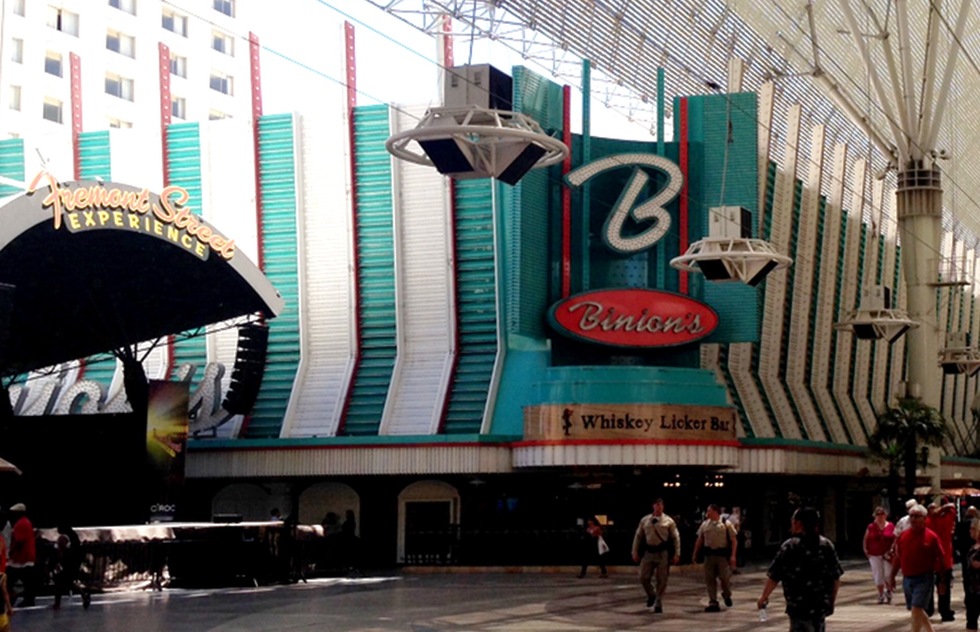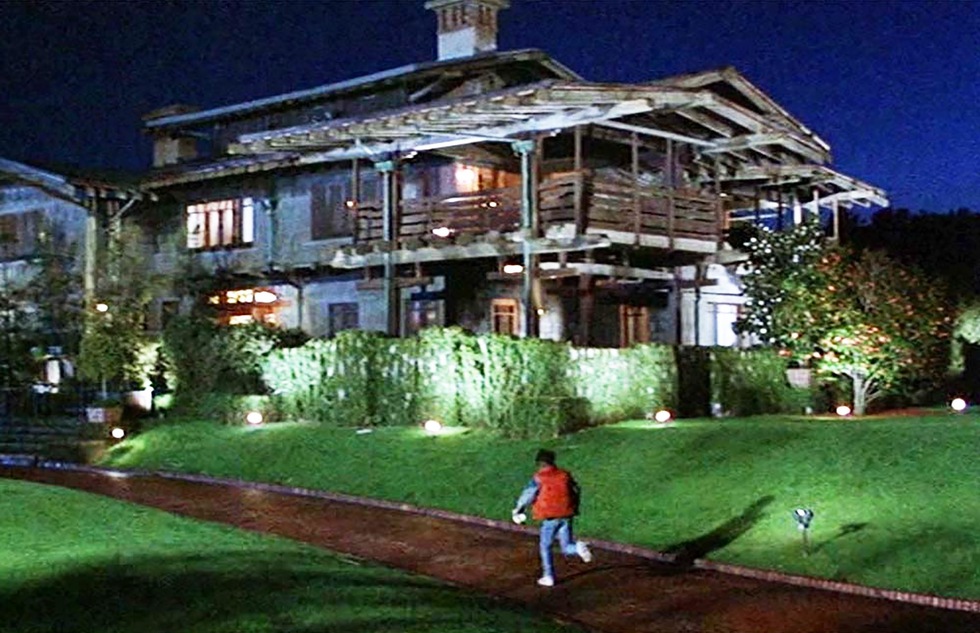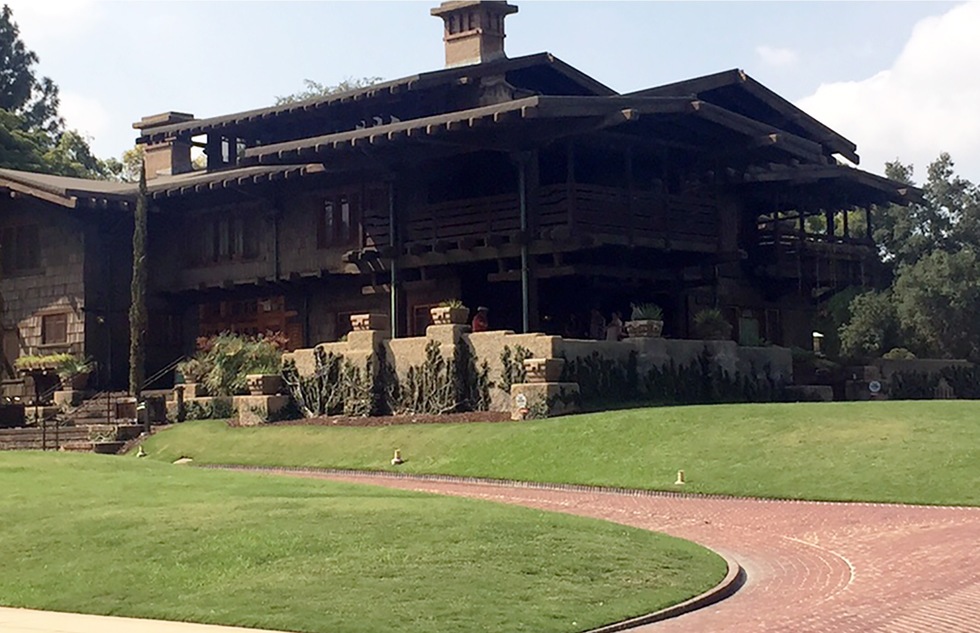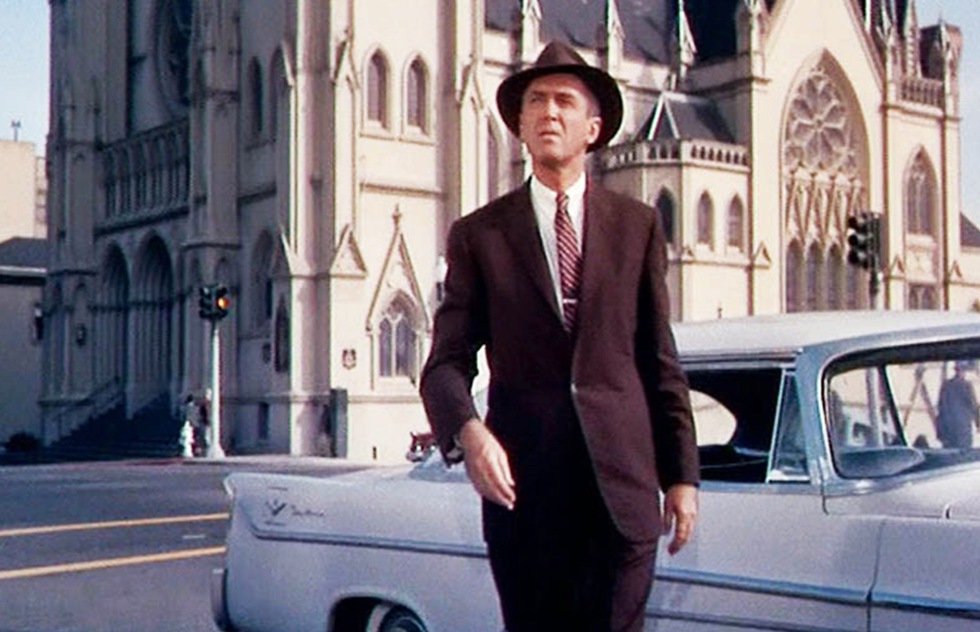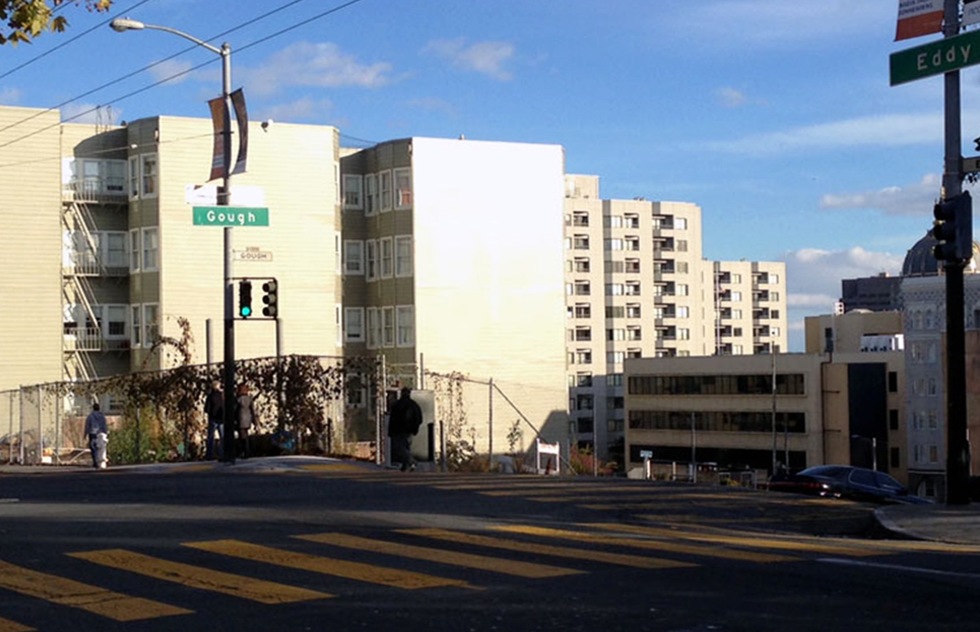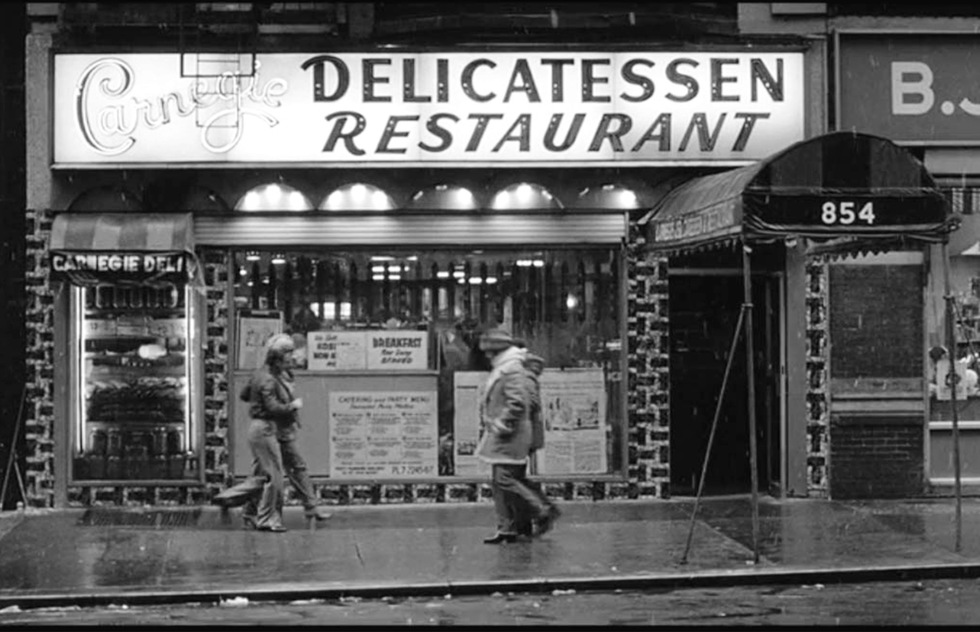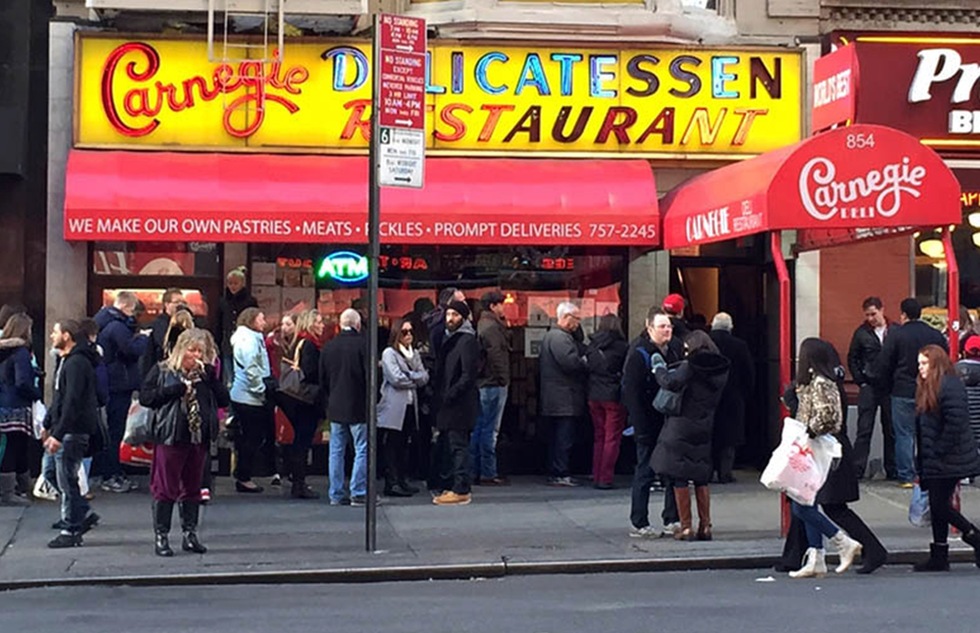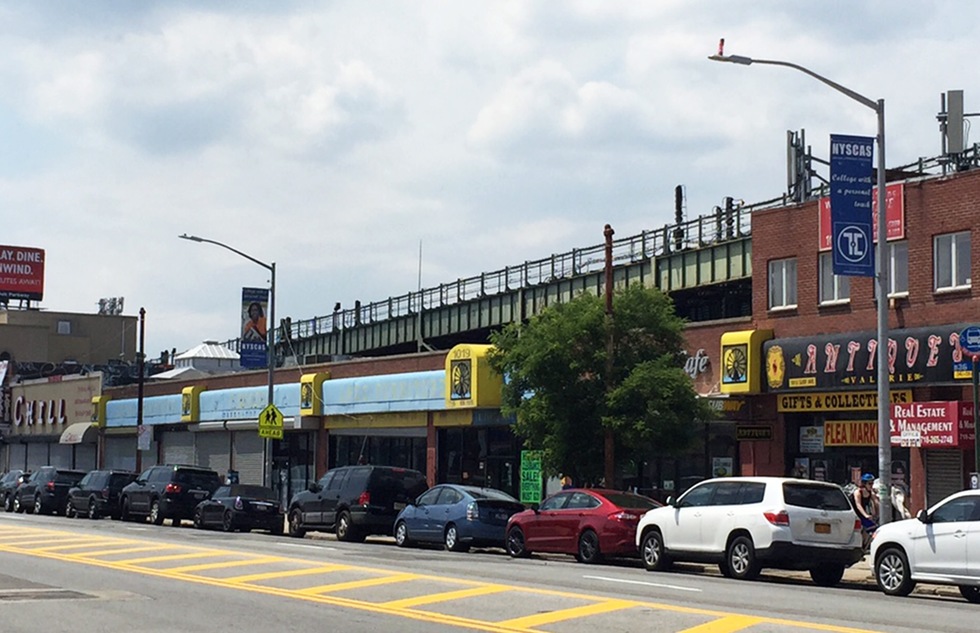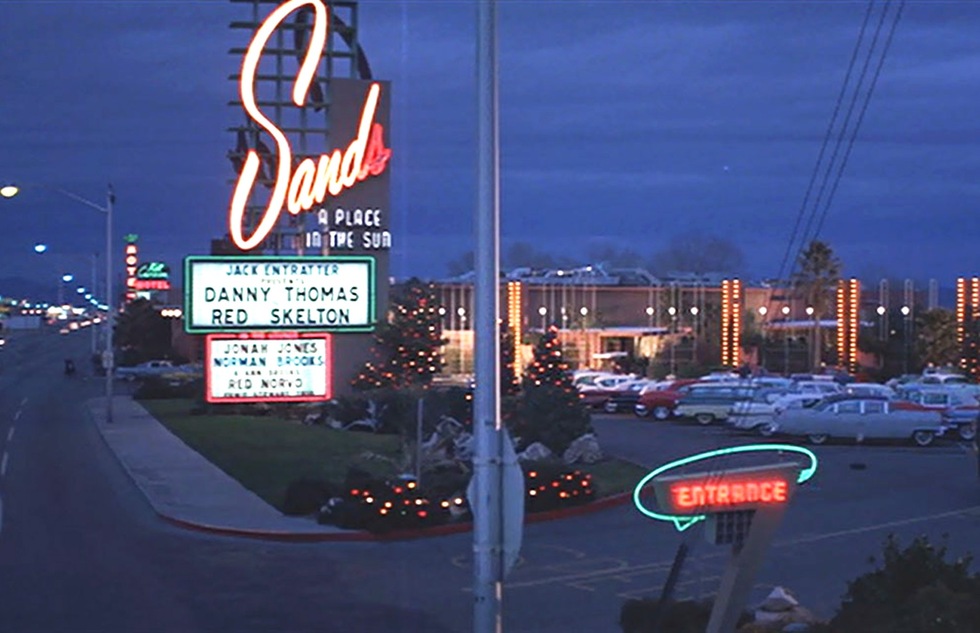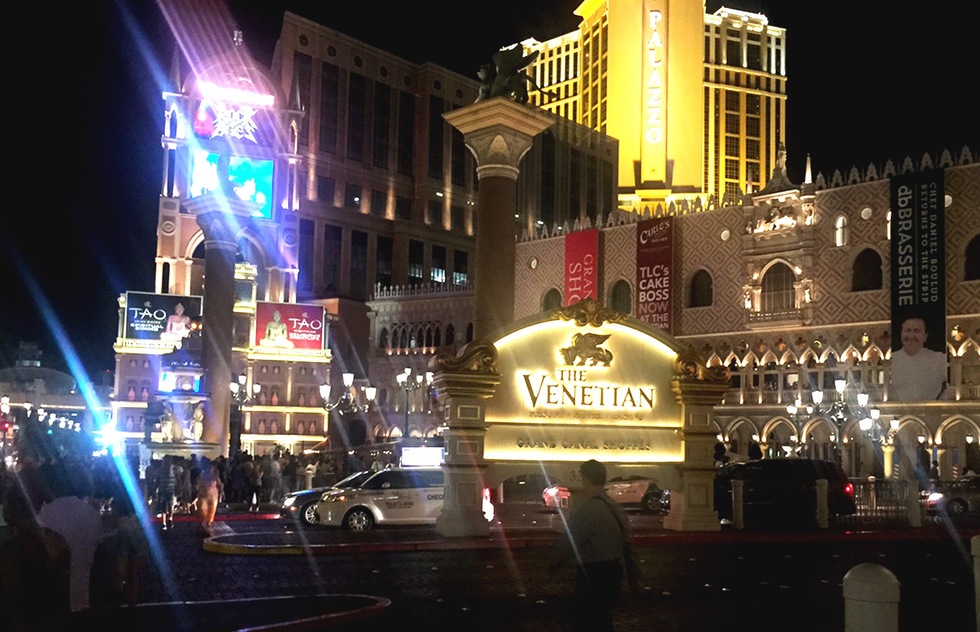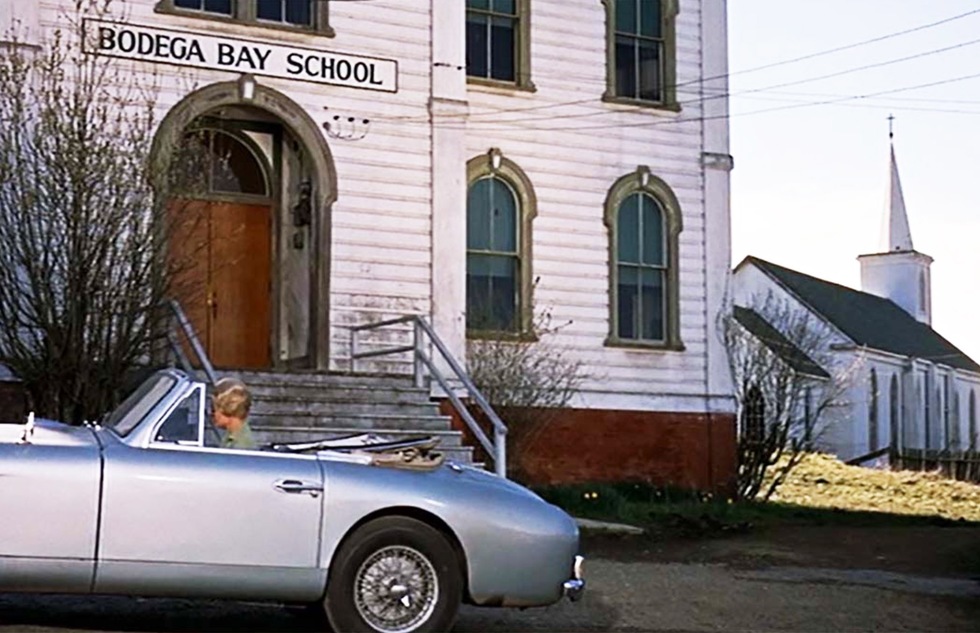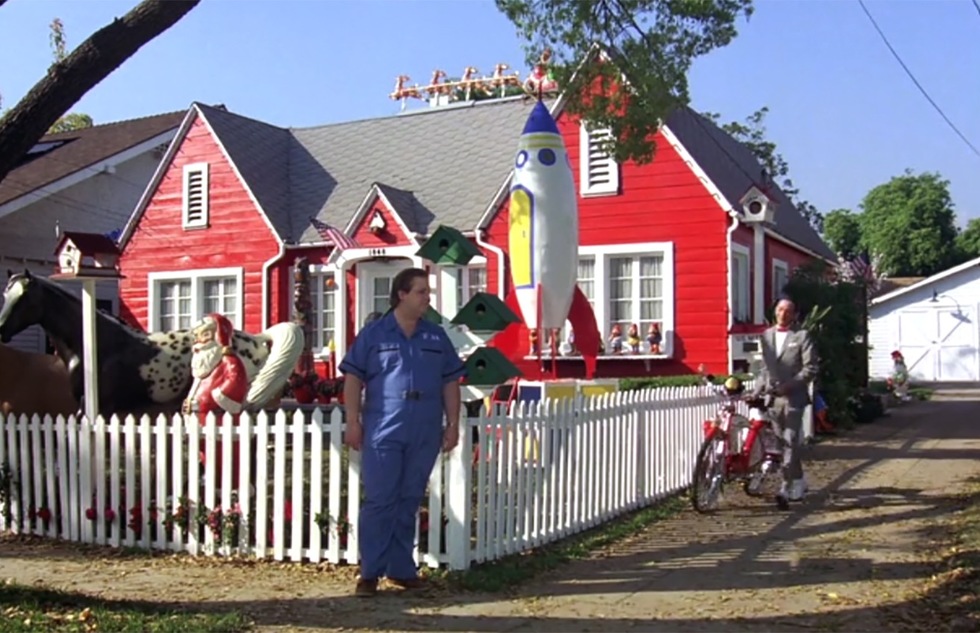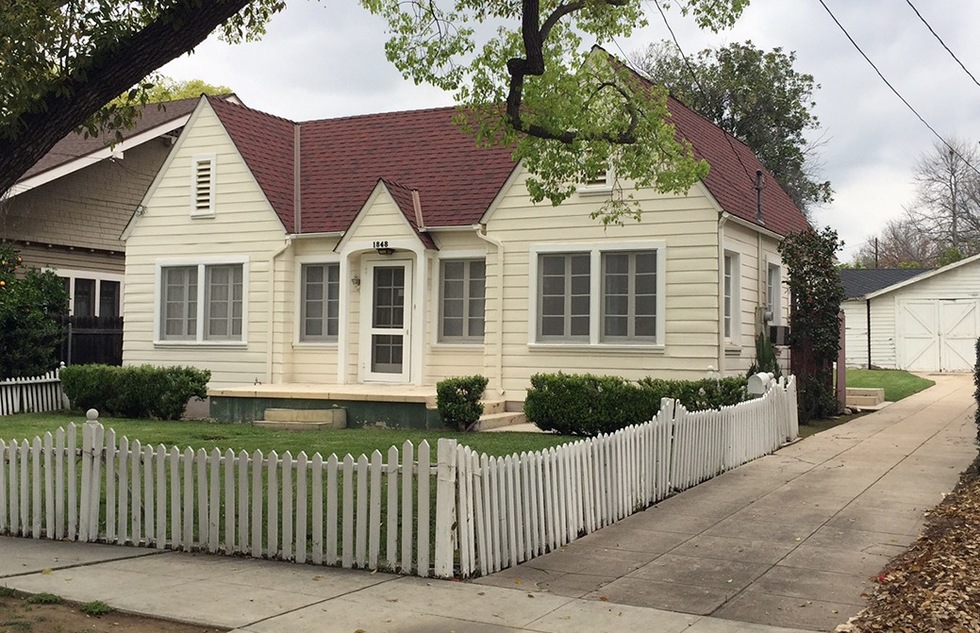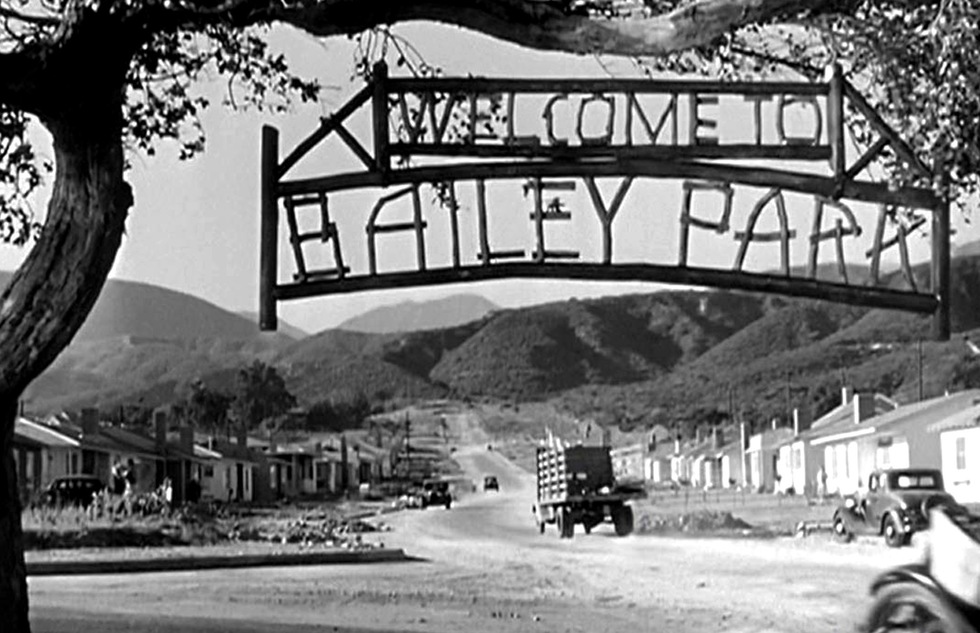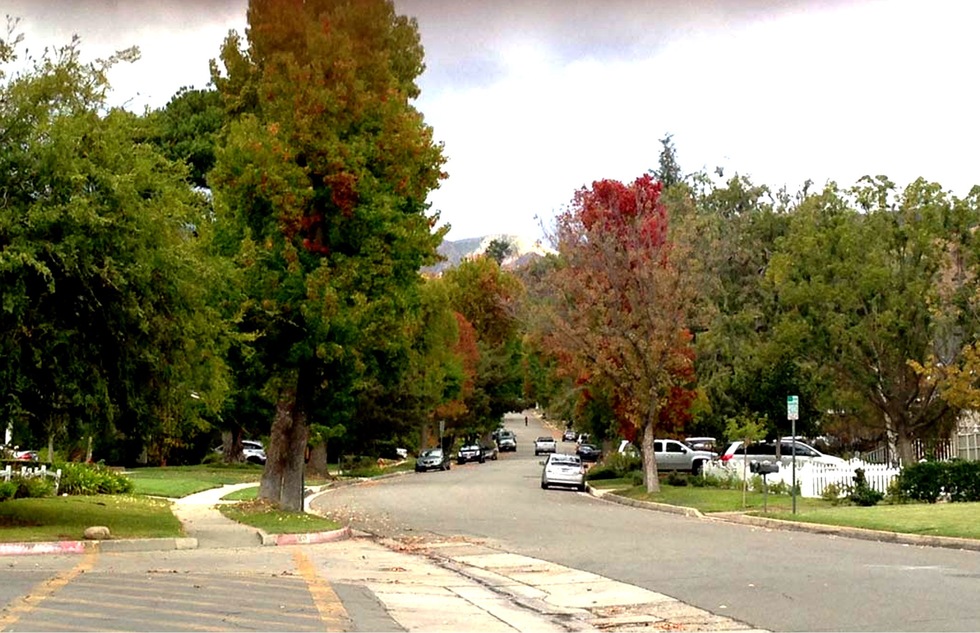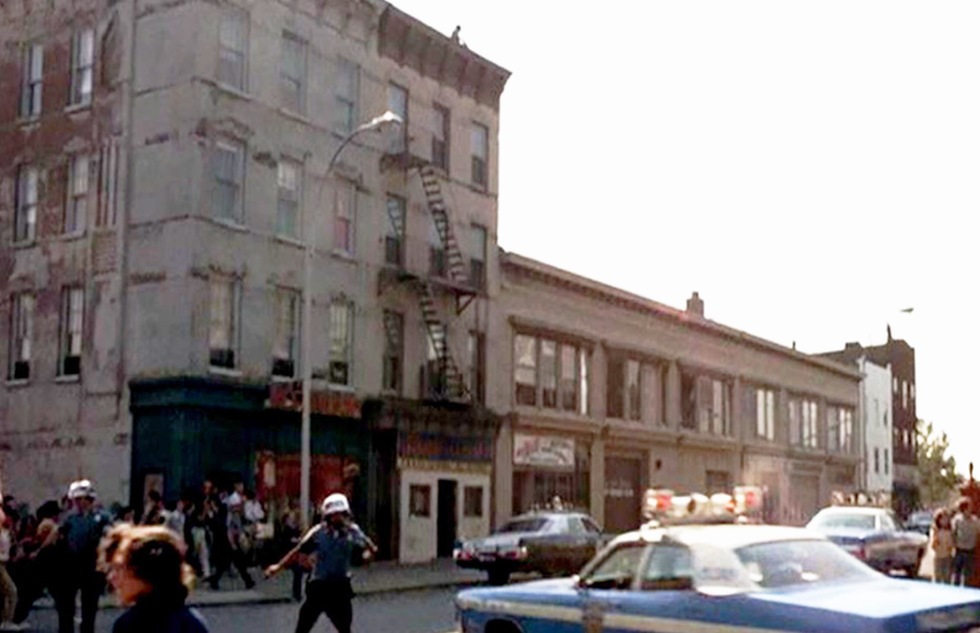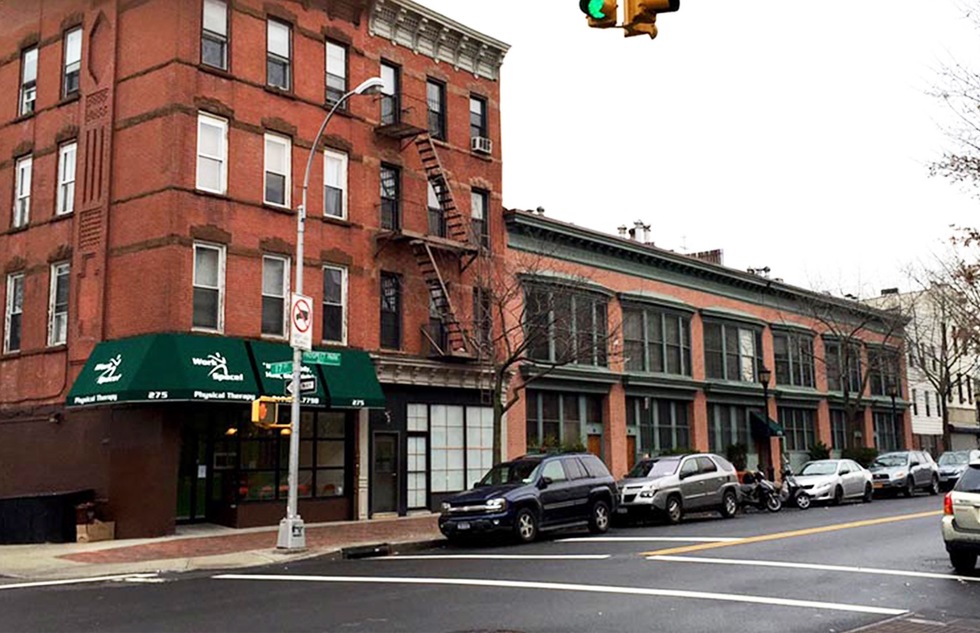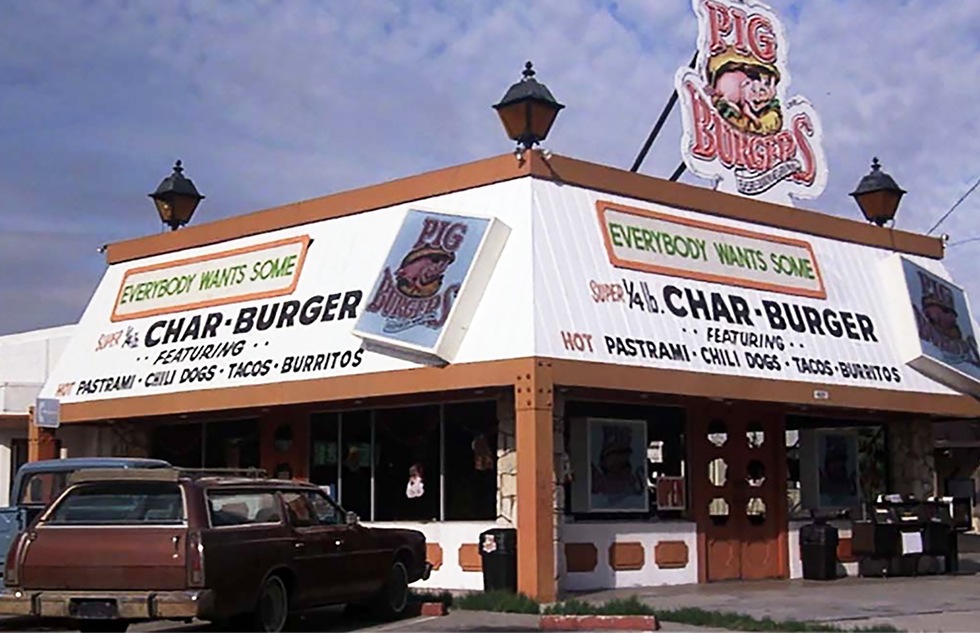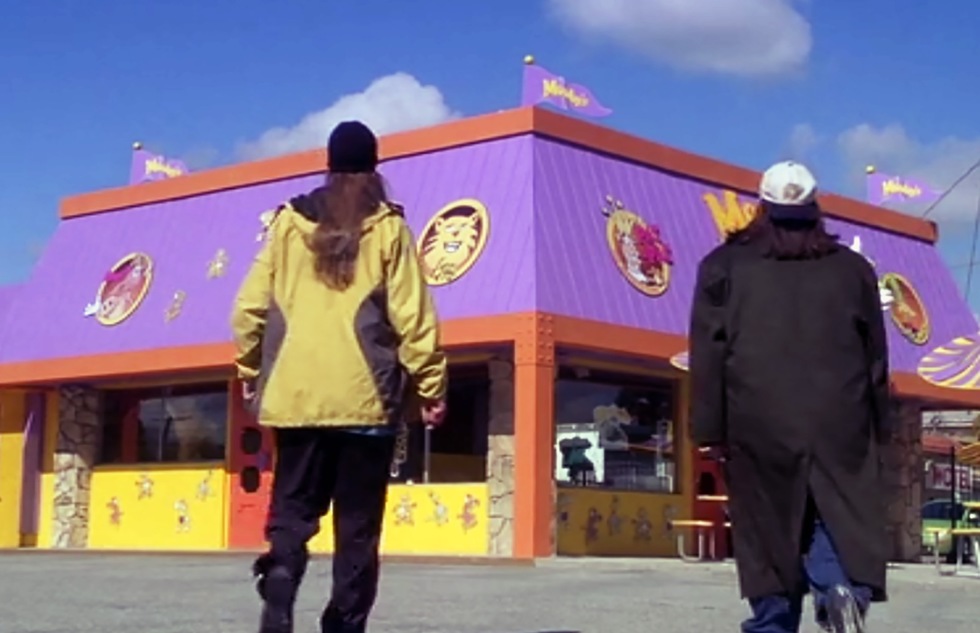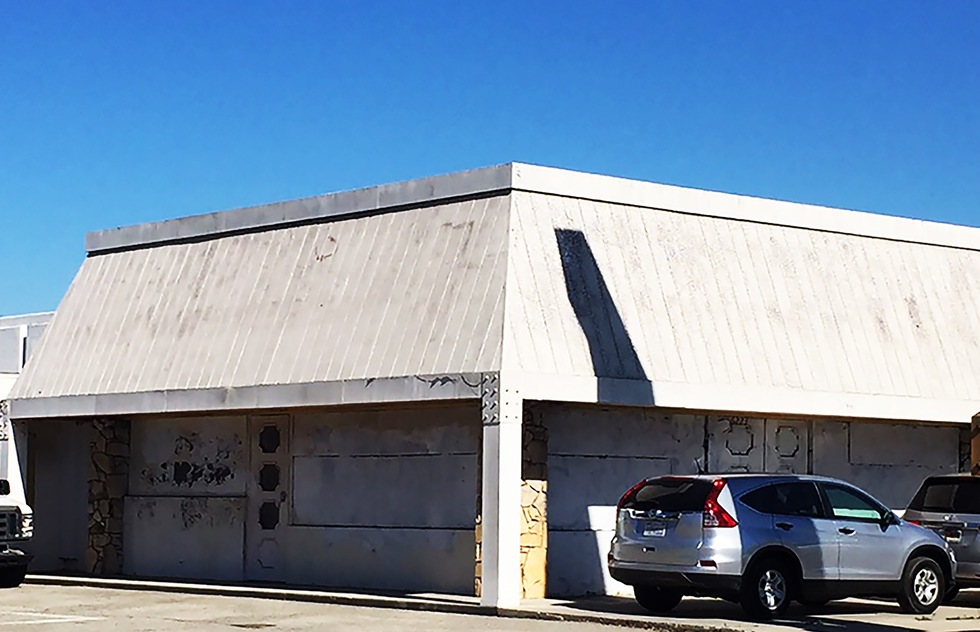Then-and-Now Pictures of Movie Locations, from Hitchcock to Pee-wee
By Jason Cochran
We travel for food. We travel for weather. And some of us travel for entertainment history. Admit it—on your own vacations, you've sought out spots because you saw them first on the screen. The now-defunct smartphone app ScenePast compileed paired images of historic locations all over the world.
On the heels of our feature tracking the modern-day changes in vintage tourist postcards (click here to see those), ScenePast compiled a new set of before-and-after shots for major filming locations from classic movies and TV shows—starting with this one, from the late 1970s, when the TV series The Incredible Hulk used the east side of Times Square in New York City to show David Banner turning into his mean, green alter ego (Lou Ferrigno). Keep clicking to see the real transformation.
On the heels of our feature tracking the modern-day changes in vintage tourist postcards (click here to see those), ScenePast compiled a new set of before-and-after shots for major filming locations from classic movies and TV shows—starting with this one, from the late 1970s, when the TV series The Incredible Hulk used the east side of Times Square in New York City to show David Banner turning into his mean, green alter ego (Lou Ferrigno). Keep clicking to see the real transformation.
Seventh Avenue and 45th Street, New York City
Times Square has changed considerably, shifting from a drab graveyard of bygone amusements to a sought-after seat for corporate brand placement. Bond operated a giant clothing store here starting in 1940 that closed in 1977, just as The Incredible Hulk was filmed. It later became a disco and now part of the space is a restaurant, Bond 45, that has recycled the historic name and neon look.
Touch of Evil (1958)
A century ago, the Los Angeles seaside community of Venice was created to attract West Coast transplants with exotic flavor. By the mid 1950s, urban sprawl and poor planning had soured the fantasy, and when director Orson Welles needed a place that could stand in for a seedy Mexican border town, Venice played the part with few changes required. The movie's famous three-minute tracking shot through the center of town is now considered a major mark in cinematic history.
23 Windward Avenue, Venice, Los Angeles, California
Venice has let so many original buildings go that a three-minute tracking shot through town would mostly show parking lots nowadays. Fortunately, one of the world's most famous beaches is just a few yards behind the photographer of this shot.
The Crimson Kimono (1959)
One of the classics of film noir, The Crimson Kimono was shot in Downtown Los Angeles' Little Tokyo, depicted in the film as a shadowy hotbed of strippers, murder, and latent racism.
220 East 1st Street, Los Angeles
Reflecting a corresponding shift in cultural perceptions, the same intersection is now a hotbed of consumerist Japanese-American culture. Weller Court is a destination for Japanese books and food, not post-war degradation.
Psycho (1960)
Given the shock of its iconic shower scene, it's easy to forget that Psycho's story winds along for 47 minutes before arriving at the first murder. Janet Leigh's highly unpleasant bathing experience was filmed on the Universal Studios lot, but much of the run-up was shot nearby. This location was less than a half mile north of Universal's gate, so director Alfred Hitchcock didn't have to amble very far.
4270 Lankershim Boulevard, Toluca Lake, Los Angeles
The landscape of greater Los Angeles hasn't summoned much inventiveness, either. There's still a car dealership on the premises.
Diamonds Are Forever (1971)
In 1970, the heart of Las Vegas was its downtown area. That's where this James Bond film was shot.
Fremont Street and 1st Street, Las Vegas
Although today's view looks like it's been this way since 1970, in fact the Fremont Street area has been the focus of considerable redevelopment. A canopy has been added over the street, but it has yet to recapture the glory it enjoyed when it was the nucleus of Sin City.
Back to the Future (1985)
Marty visits Doc in his palatial mansion. We're never told exactly how Doc could afford such a lavish spread—nor why a middle-aged bachelor was such close friends with a high school boy—but never mind. The house made an impression.
4 Westmoreland Place, Pasadena, California
The house still makes an impression, and although more time has passed since filming than what Marty time-jumped to go from 1985 to 1955, little has changed. That's because it's a landmark of sorts. It's the Gamble House, built in 1908 as the winter home for the Gamble Family of the Procter & Gamble fortune. You can take a tour.
Vertigo (1958)
Jimmy Stewart, playing the most pitiful stalker in film history, passes San Francisco's St. Paulus Lutheran Church, which was built in the Western Addition in 1894 and dodged the double calamaity of the 1906 quake and fire.
Eddy and Gough Streets, San Francisco
In 1995, while serving as a crucial support center for victims of the city's AIDS plague, the church burned down. Across the street, the building that played the McKittrick Hotel, where the object of Stewart's obsession stayed, was demolished right after shooting ended—director Alfred Hitchcock liked its past-its-prime look. Like Carlotta Valdes herself, the movie depictions of these places are unattainable mirages from the past.
Broadway Danny Rose (1984)
At the time of filming, the Carnegie Deli, which opened in 1937 in Midtown Manhattan, was considered a paragon of Jewish comfort food. Woody Allen chose it for the opening tracking shot of his film, in which a group of comics kibitz about their material at a back table.
854 Seventh Avenue, Manhattan, New York City
The Carnegie Deli lasted all the way until 2016, when it closed for good. Here it was right before it left us, along with the original sign that adorned the restaurant back in 1983 when Allen shot his film.
Speedy (1928)
In Harold Lloyd's full-length silent picture, the comic speeds through the streets of New York on a trolley, giving us a priceless panorama of the city at the height of the Jazz Age. In this scene, he goes to Luna Park, the famous amusement center on Coney Island, to celebrate losing a lousy job as a soda jerk—a setup that would be unthinkable after the Great Depression started the next year. In the film, you can watch Lloyd and his girlfriend hurl their bodies down multistory slides and across crowded spinning turntables without benefit of safety restraints—rides that no lawyer would permit today.
1015 Surf Avenue, Brooklyn, New York City
The Great Depression sent Luna Park on a journey bumpier than any of its rides, bouncing in and out of bankruptcy and to a fiery end in 1944. The elevated subway that once delivered weeekenders to its pleasures now stands forlorn. The famous Cyclone roller coaster, which was only a year old when Speedy was released, is still located across the street. It's operated by a company that runs an assortment of basic carnival rides near the once-thronged boardwalk. The outfit's name? Luna Park.
Ocean's Eleven (1960)
The Rat Pack conspires to burgle five casinos, including the Sands (pictured), along a Las Vegas Strip that strikes us as positively bucolic even before we see the "after" slide.
3355 South Las Vegas Boulevard, Las Vegas
After the movie, the Sands was purchased by Howard Hughes, and then by gambling magnate and political operative Sheldon Adelson. When business went downhill, it closed down, Hollywood crashed a plane into it for the movie Con Air, and—as if appearing in a Nicolas Cage vehicle wasn't indignity enough—its hotel tower was finally imploded to the delight of onlookers. On its lot, construction began on The Venetian in 1997. When Ocean's Eleven was remade in 2001, producers elected to film at the Bellagio, operated by Adelson's rival.
The Birds (1963)
Many of the long shots in Alfred Hitchcock's The Birds were achieved by combining matte paintings with actual footage of Bodega Bay, a seaside hamlet on the coast of Sonoma County, California. This shot, though, was done without trickery, unless you count 1.) the efforts required to dye Tippi Hedren's costume that lurid shade of green and 2.) the fact that the school where the evil flock roosted is actually about 7 miles inland, not in town.
17110 Bodega Lane, Bodega, California
Sonoma County sheriff Samuel Potter donated land for a school in 1872, and the next year it was built—out of redwood, if you can believe it. But by 1961, the building was outgrown and abandoned. Locals were about to tear it down and sell it for parts when Hitchcock immortalized it. Now it's cherished for two important aspects of its history, and it's in terrific shape.
Sunset Boulevard (1950)
There were several Schwab's Pharmacy locations around Los Angeles, but this location was favored by movie business mavens ranging from Judy Garland to Charlie Chaplin, who would hang out at its soda counter or play pinball all day long. True to life, Billy Wilder's classic movie depicts it as a headquarters for industry types, or, as down-on-his-luck screenwriter Joe Gillis (William Holden) puts it, "Kind of a combination office, coffee klatch, and waiting room. Waiting, waiting for the gravy train." The exterior appeared in the film, but the interior was re-created on a soundstage at Paramount Pictures, less than 4 miles away.
8000 Sunset Boulevard, Los Angeles
Schwab's lasted for 51 years before shuttering in 1983. The building stood until 1988, when all that irreplaceable Hollywood history was cleared away for a blah shopping plaza, here at the curve where Sunset meets Crescent Heights Boulevard. Developers thought having a new Virgin Megatore made it worth it. What stands in the same spot today? Why, the modern-day social equivalent of the soda fountain: a Starbucks.
Pee-wee's Big Adventure (1985)
Here, after squaring off against Pee-wee (Paul Reubens) in a duel of adolescent insults, the odious Francis (Mark Holton) hatches a plan to swipe his enemy's bike. Thus the McGuffin of one of the defining comedies of the 1980s was established right at the corner of this fence.
1848 Oxley Street, Pasadena, California
This home, which was built in 1922 and has been owned by the same family for more than 40 years, may have been cleansed of its garish garb, but it will never outlive the fame of being the onetime home of Pee-wee Herman. Still, by the time of his most recent movie, Pee-wee's Big Holiday, he had inexplicably moved to a different house found in Fillmore, California.
It's a Wonderful Life (1946)
In Frank Capra's holiday classic, George Bailey (James Stewart) bucks the system to build affordable housing for his community, and he names the project after his father. But in George's vision of an alternate future, the development doesn't exist because he wasn't there to create it.
Lamour and Viro Roads, La Cañada Flintridge, California
After World War Two, the California town of La Cañada Flintridge was considered the middle of nowhere. Years later, Capra couldn't even remember where he got the shots for one of his career landmarks. Today, however, the city is known as the home of the federally funded Jet Propulsion Laboratory, which creates robotic probes and coordinates NASA's ongoing deep space missions. So all these years after George Bailey's life, this is still a home for people who build wonderful things. Bonus: The house that served as the Martini home in the movie is still standing, and it's not far away at 4587 Viro Road.
Dog Day Afternoon (1975)
This grim assortment of slouching tenements and drab stores was how most people imagined New York City in 1975, the same year local officials asked for a federal bailout and President Gerald Ford told the city—in the immortal paraphrase of the New York Daily News—to "drop dead."
Prospect Park West and 17th Street, Brooklyn
Don't let anyone tell you that New York is dangerous and dirty anymore. Okay, it may still be a little dirty, but the city of today bears nearly no resemblance to the wasteland of the Disco Era. Neighborhoods that once epitomized urban blight now empitomize the social costs of gentrification—many old timers can no longer afford to live on their own blocks.
Better Off Dead (1985)
The main character, played by John Cusack, gets a job at Pig Burgers, a repulsive fast food joint in a fictitious Northern California town called Greendale. When he dreams of an animated hamburger patty that jams to Van Halen, he gets fired in short order.
Jay and Silent Bob Strike Back (2001)
Sixteen years later, the same building found new life as another insipid fast food hole, Mooby's, in another rowdy slacker comedy, this one starring Kevin Smith and the potty-mouthed Jay Mewes.
6233 Lankershim Boulevard, North Hollywood
Pig Burgers and Mooby's were actually on the same road as the car dealership seen in Psycho. This San Fernando Valley midcentury relic is no longer benfitting from its proximity to the major movie studios. When teen comedies dried up, the ubiquity of scenes set in fast food joints went with them—and what was once officially Sandy's Char Burger has been abandoned for years. As with so many filming locations, all that's served here these days is memories. Stardom is fleeting.
For more fascinating now-and-then images, see our slideshow on vintage postcard views and how they've changed.
For more fascinating now-and-then images, see our slideshow on vintage postcard views and how they've changed.





